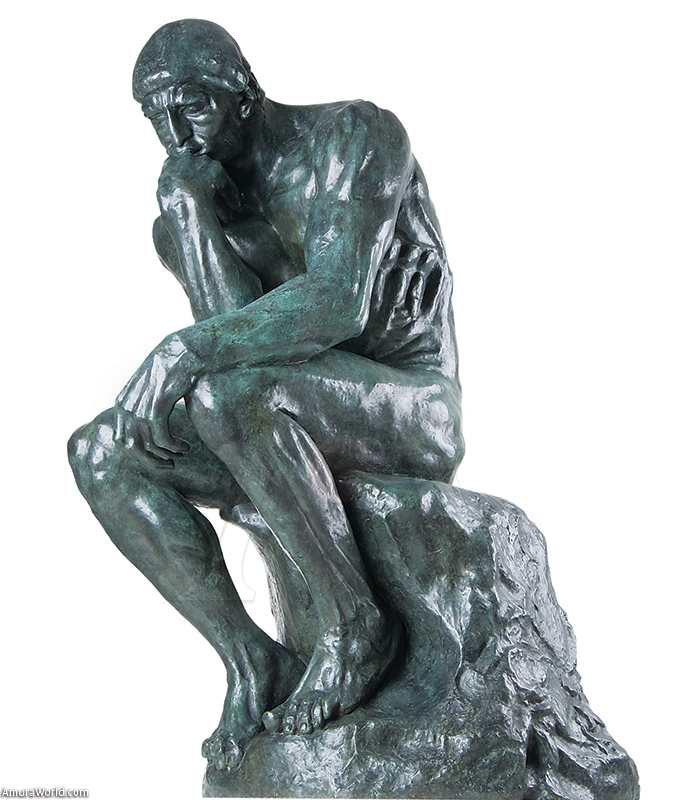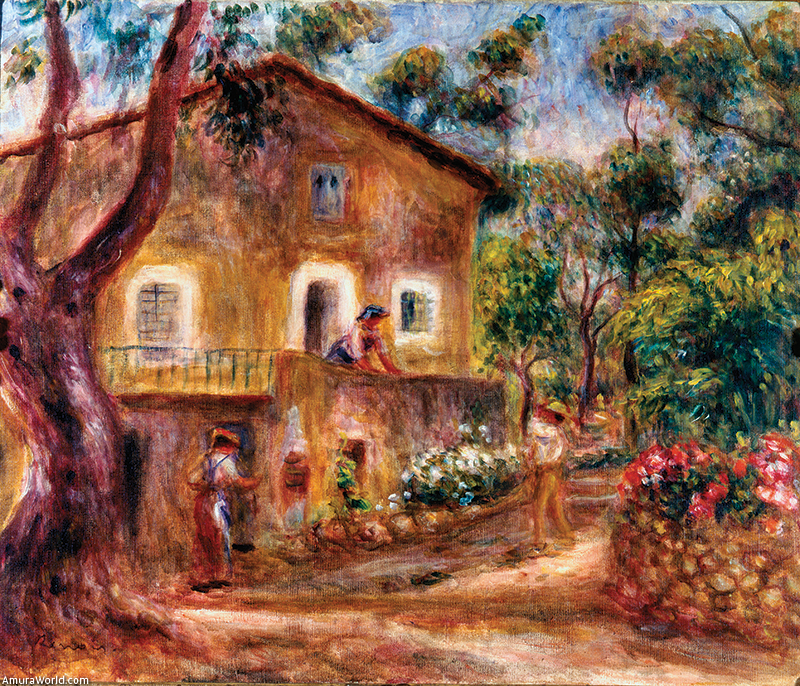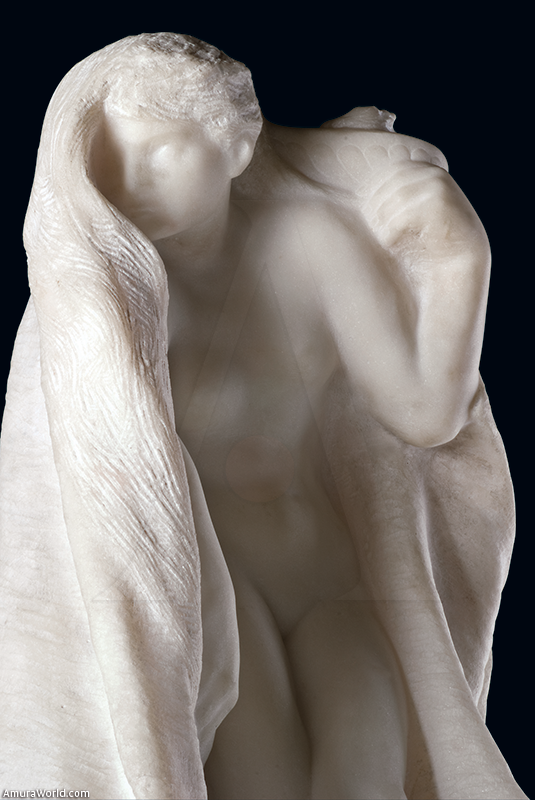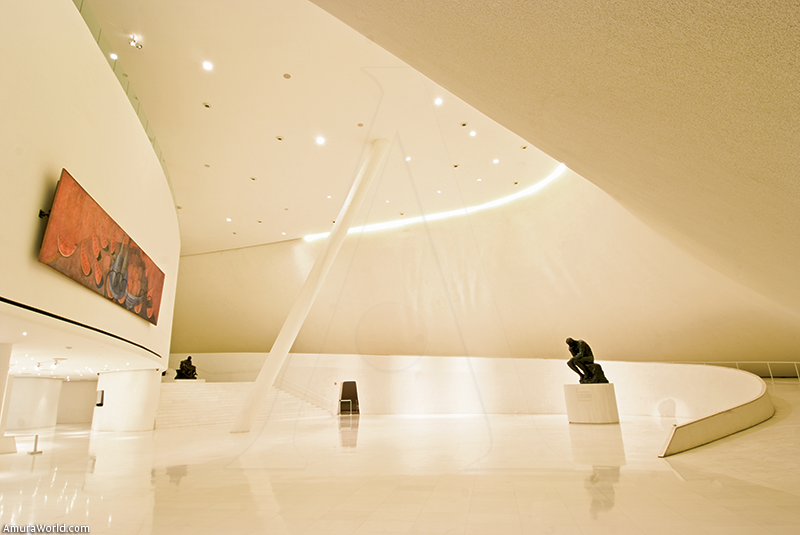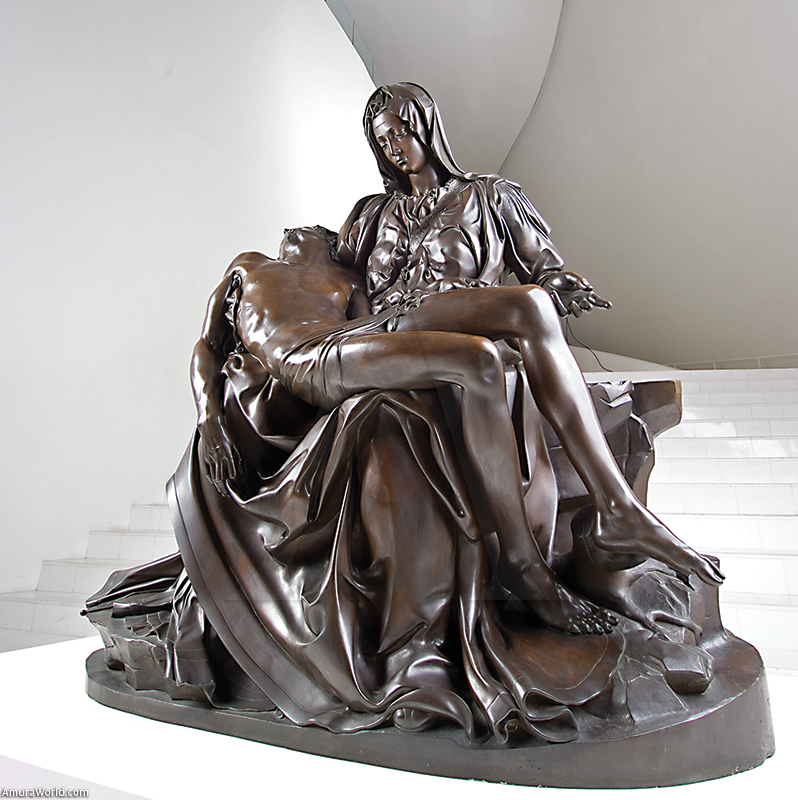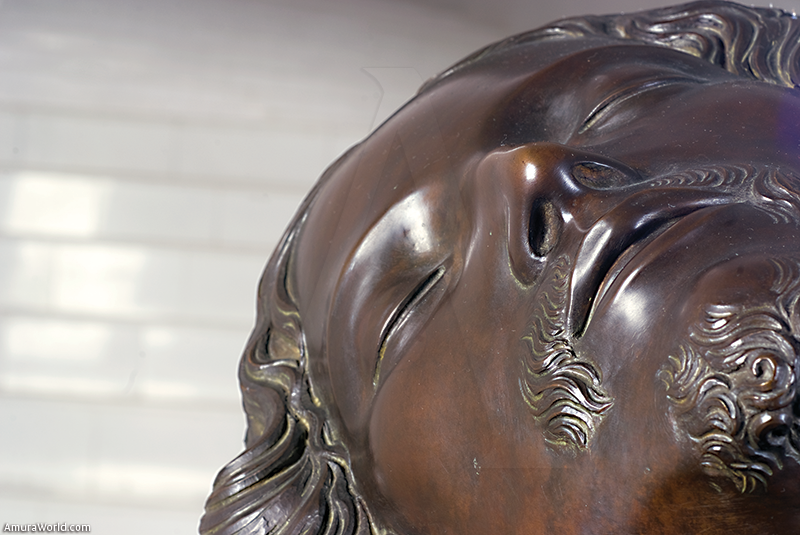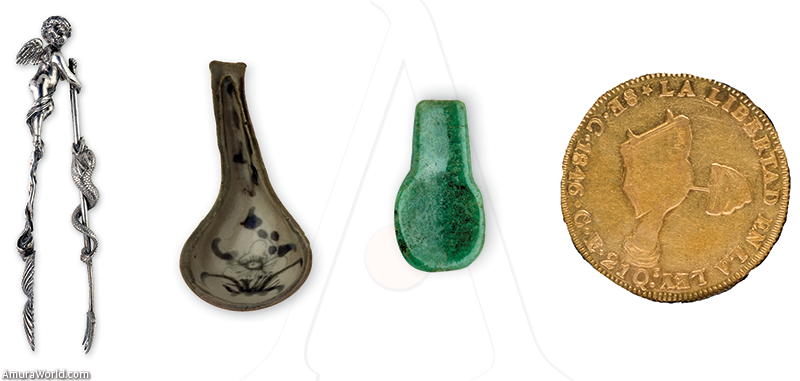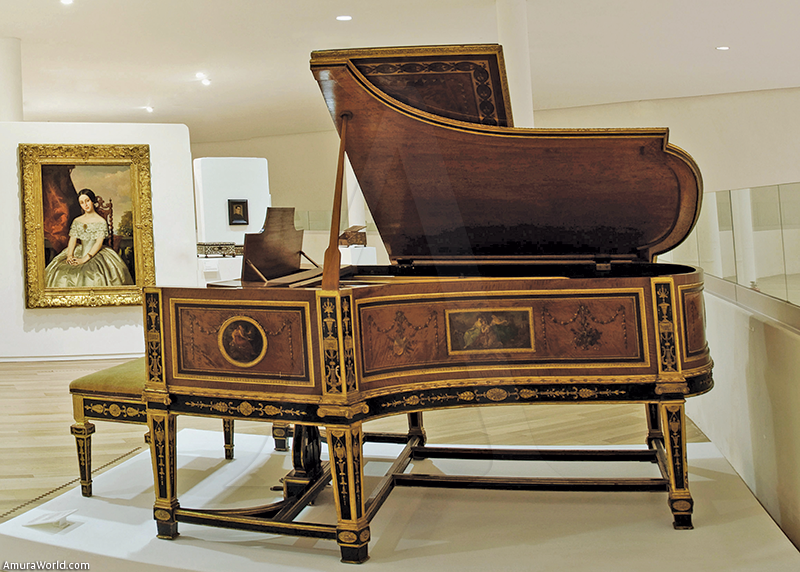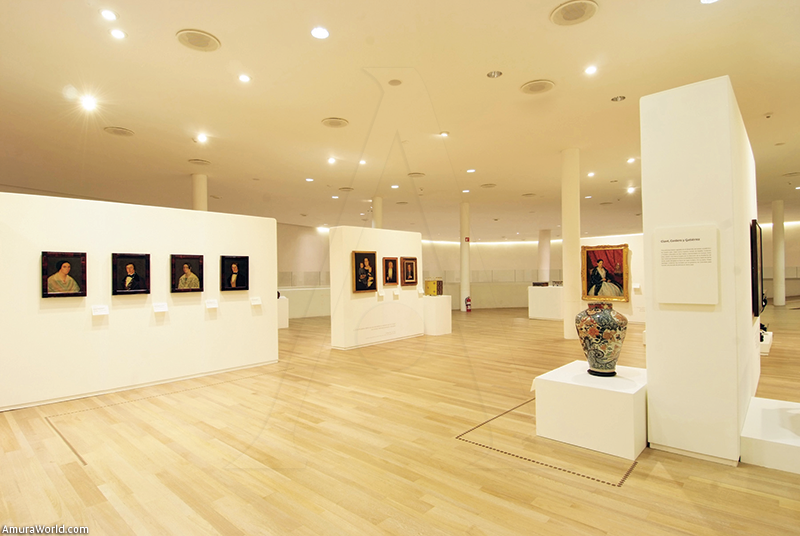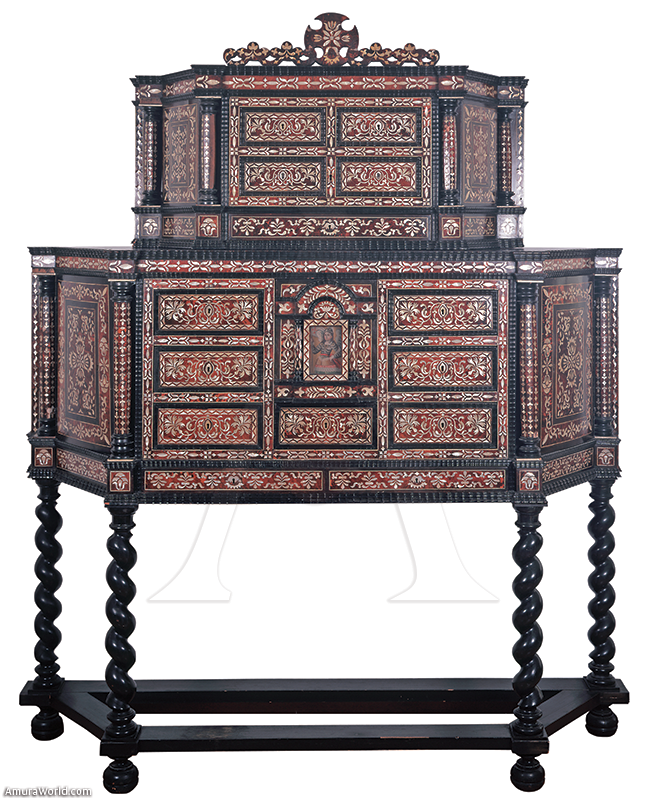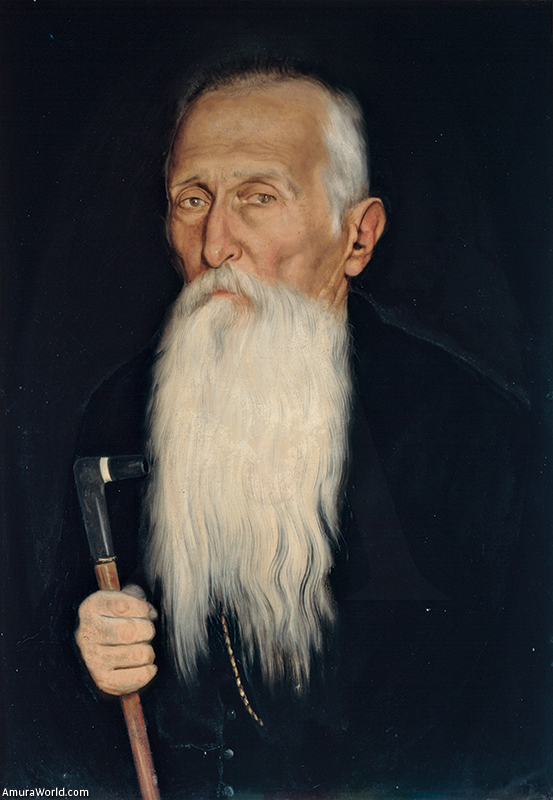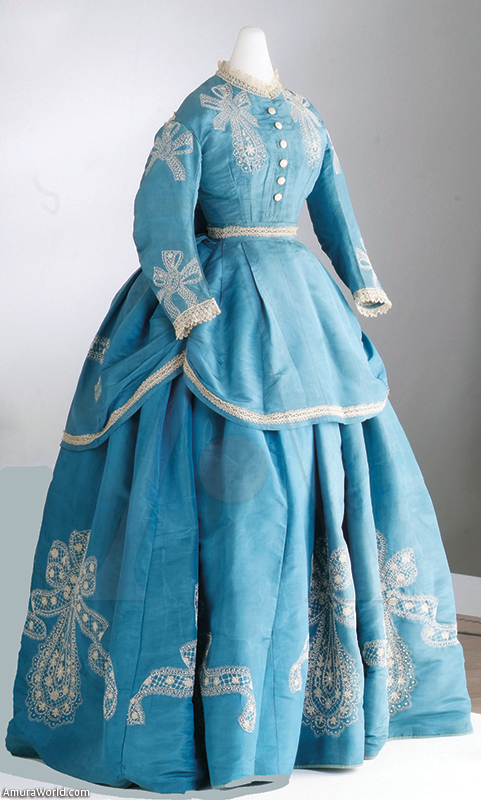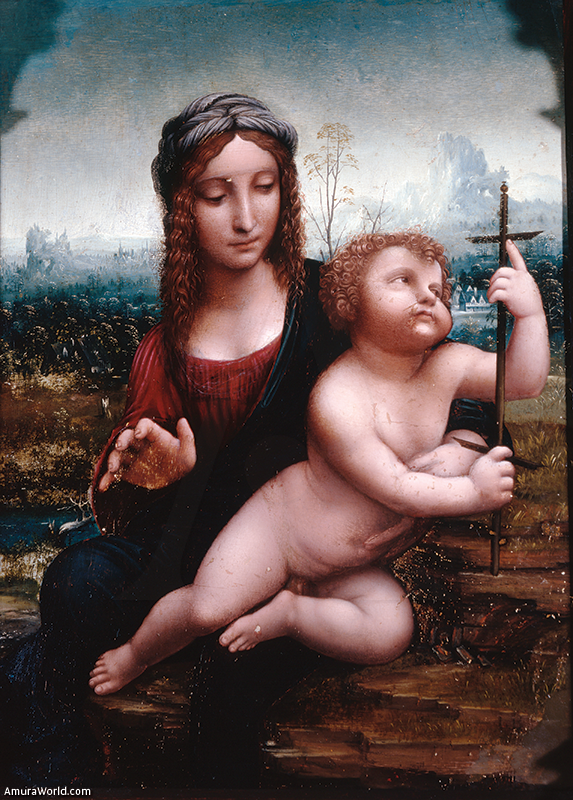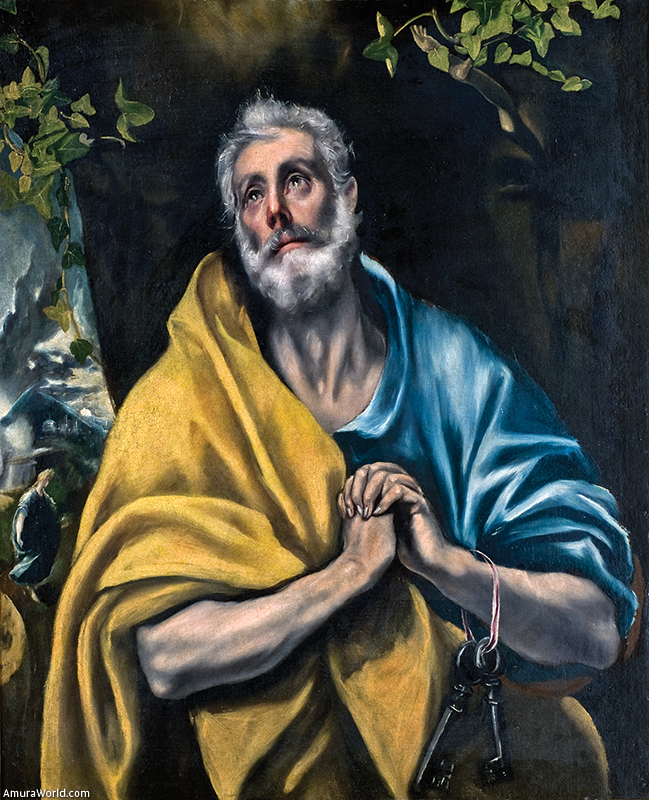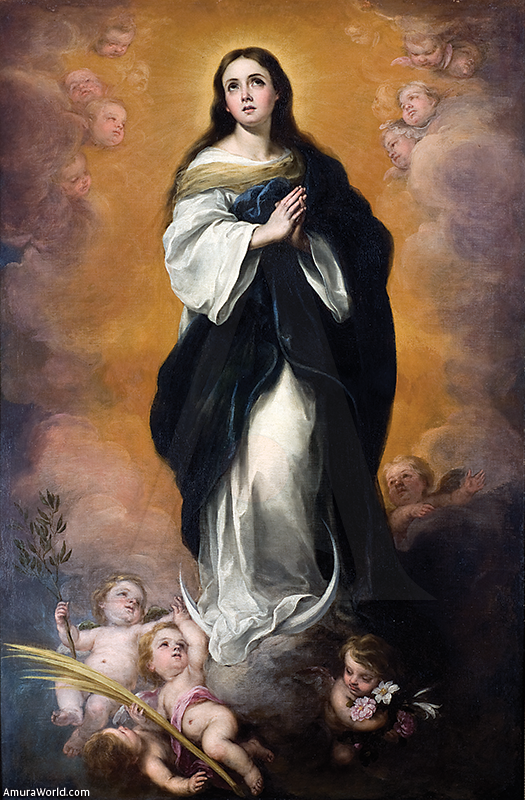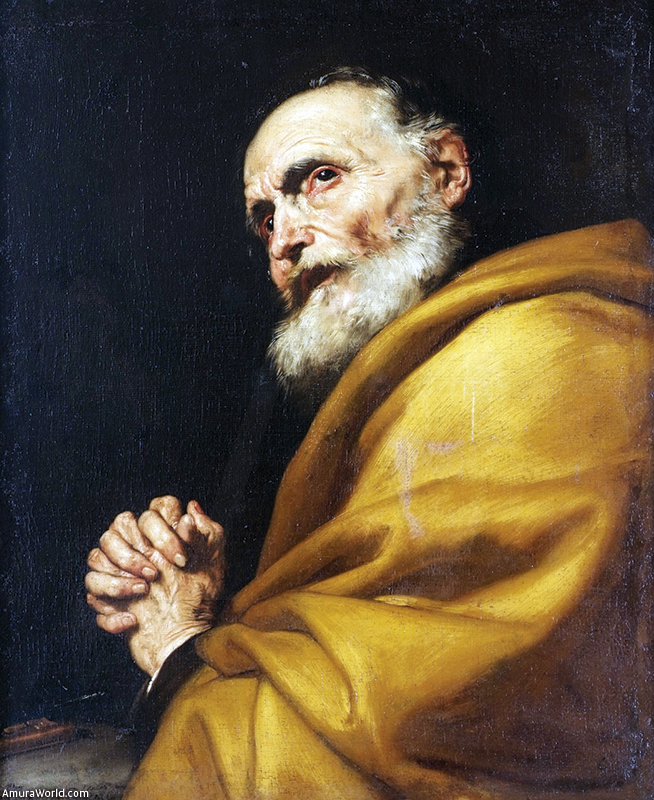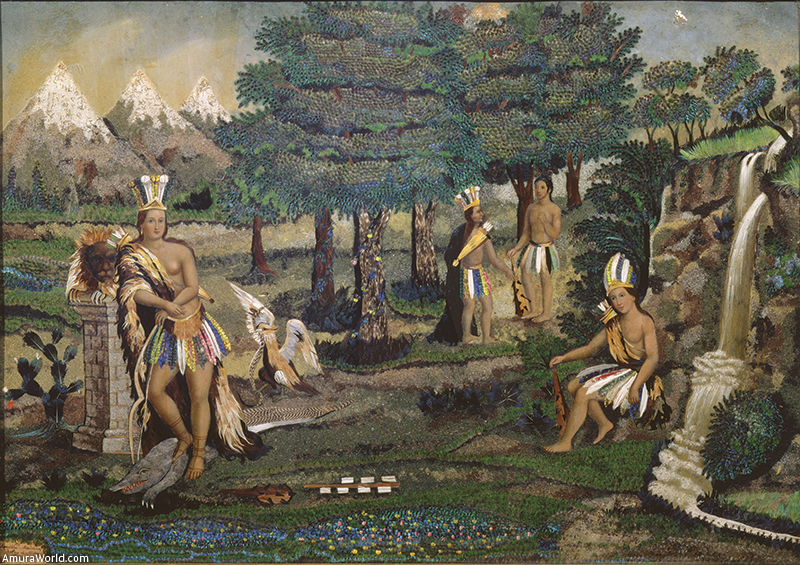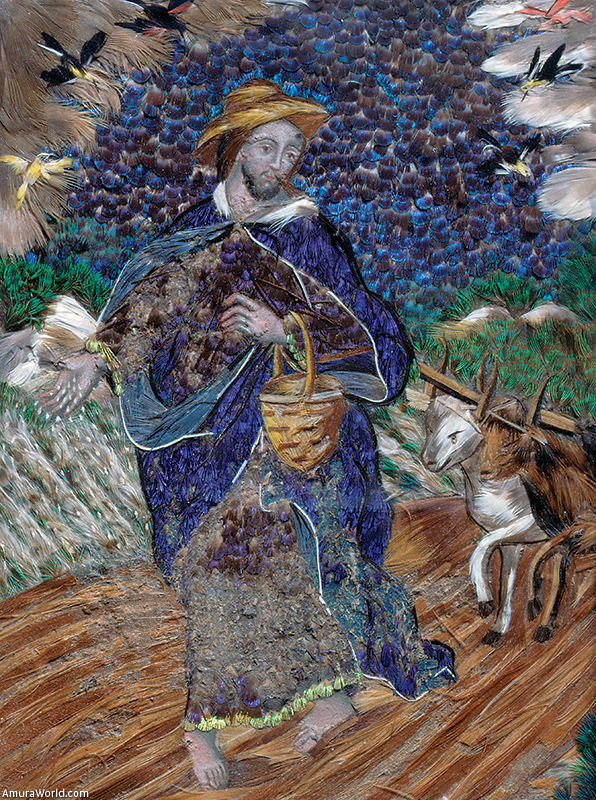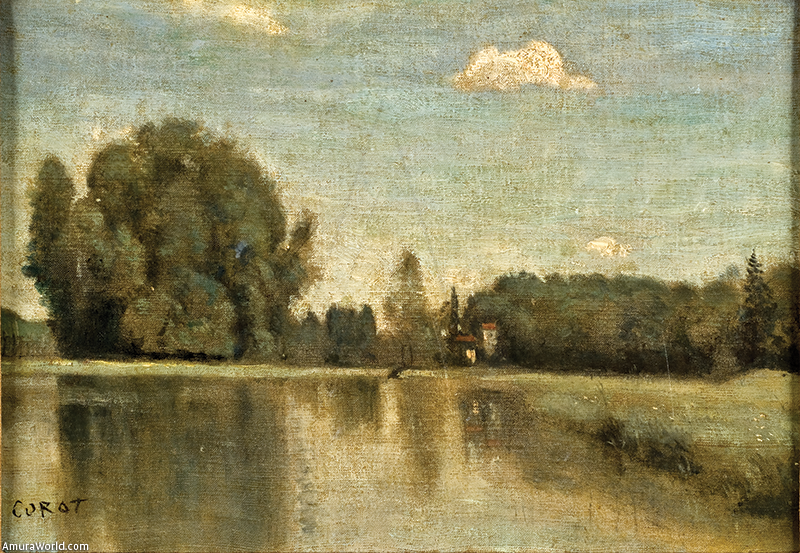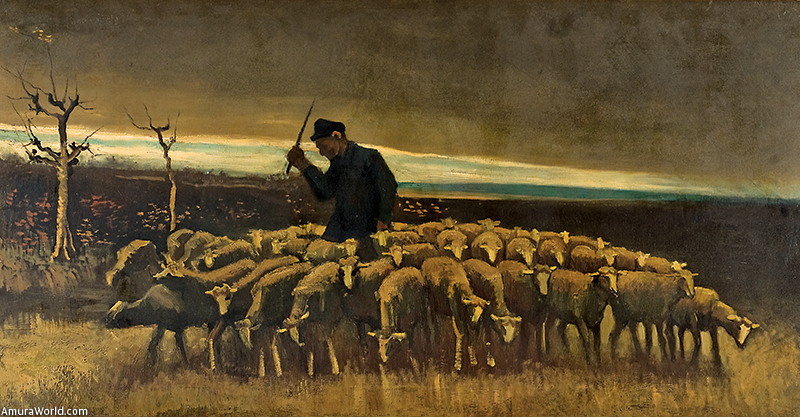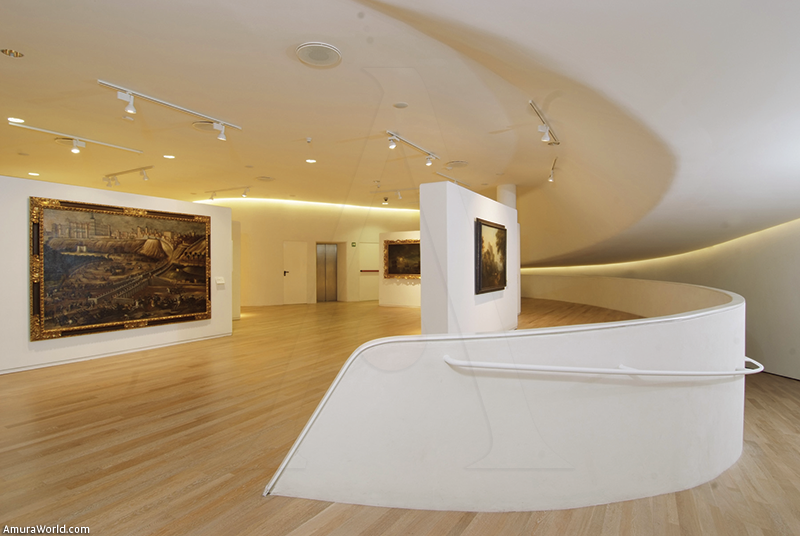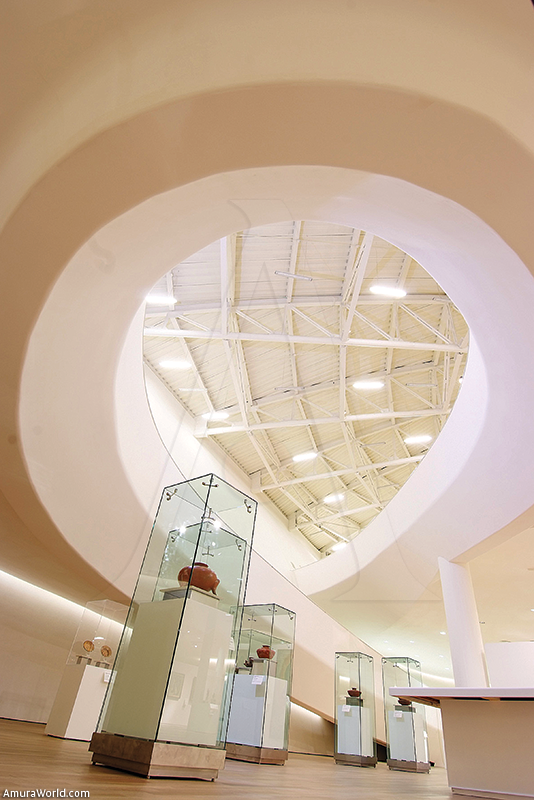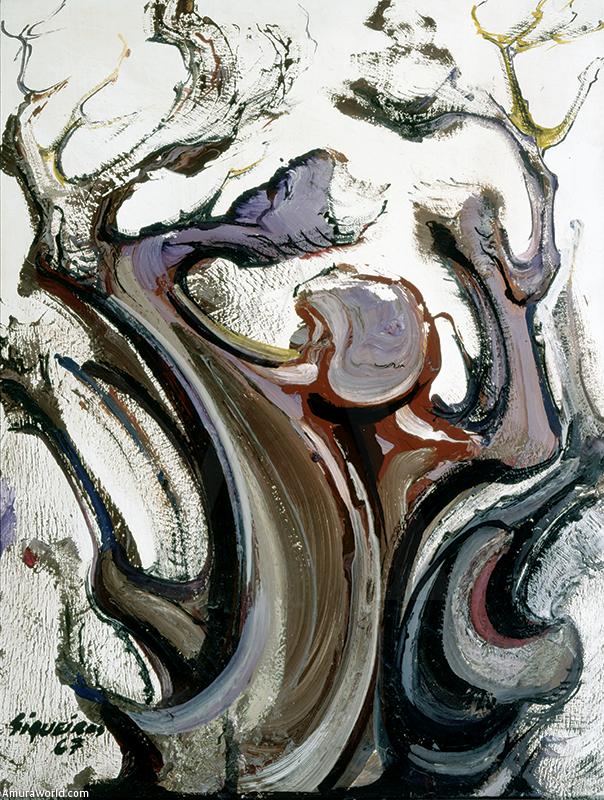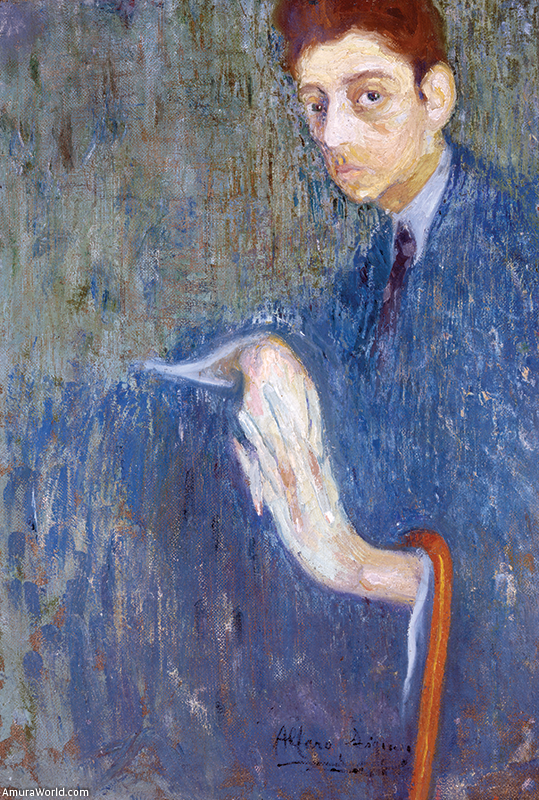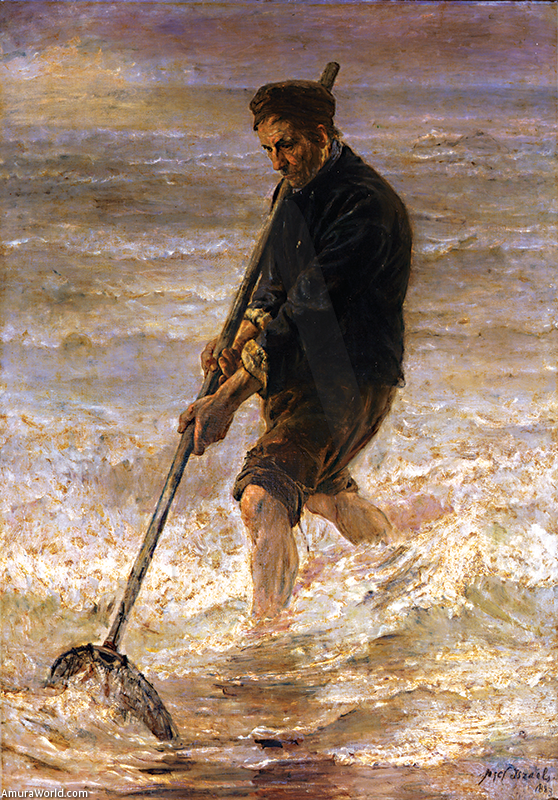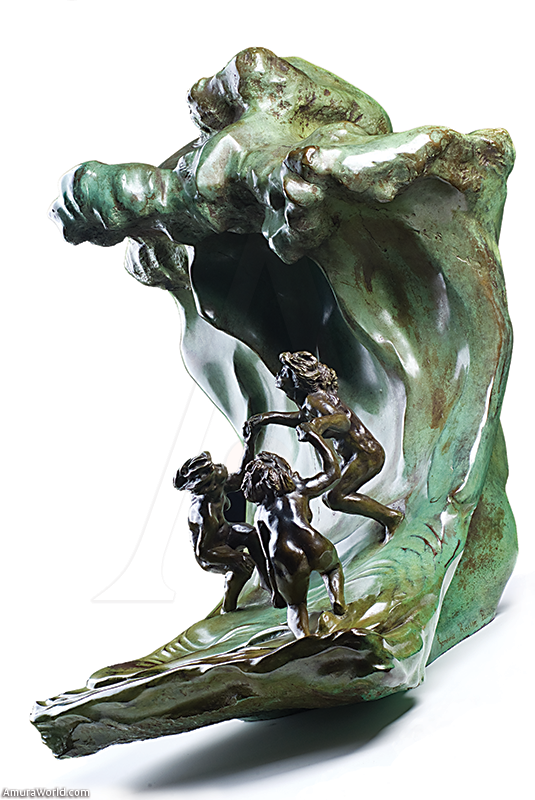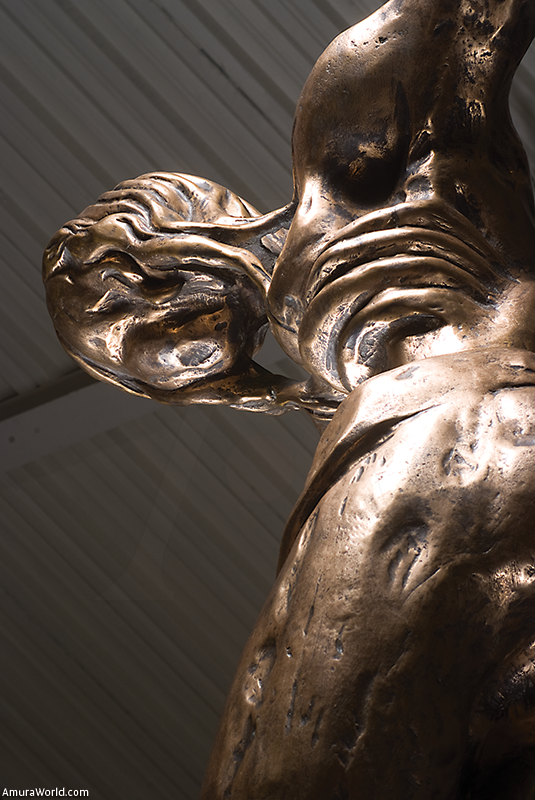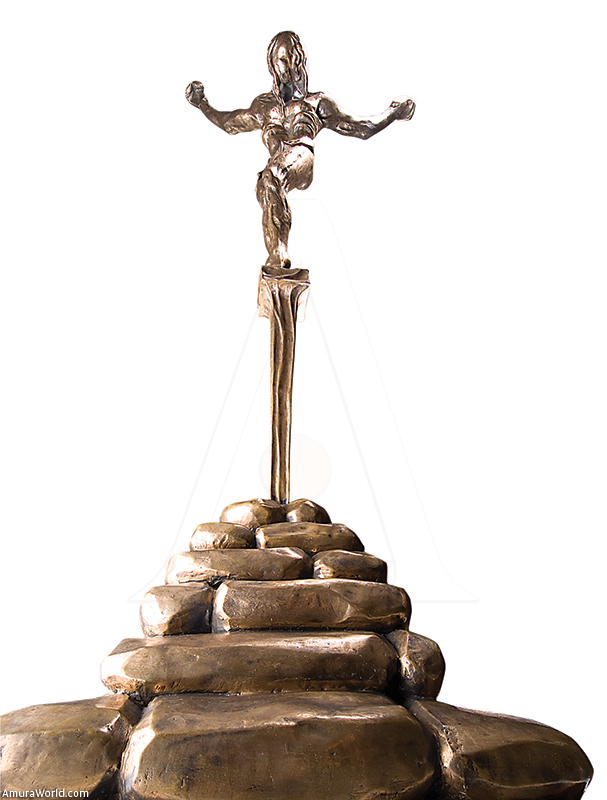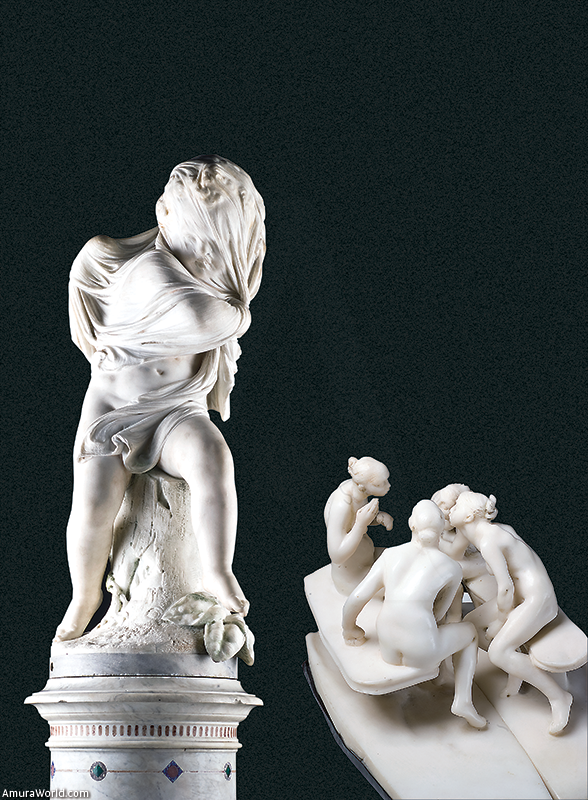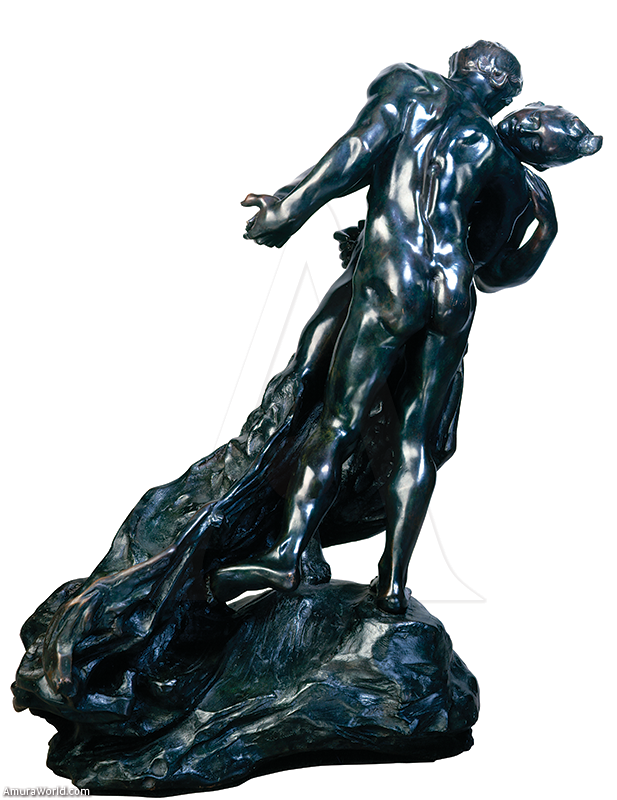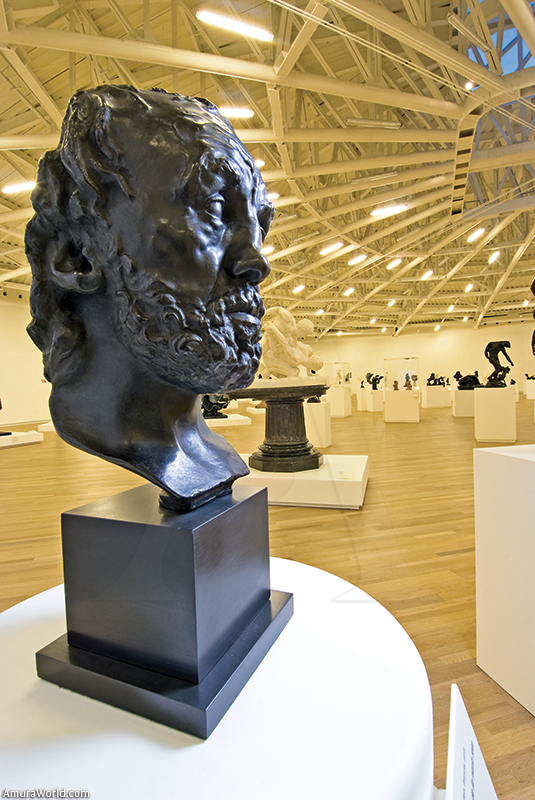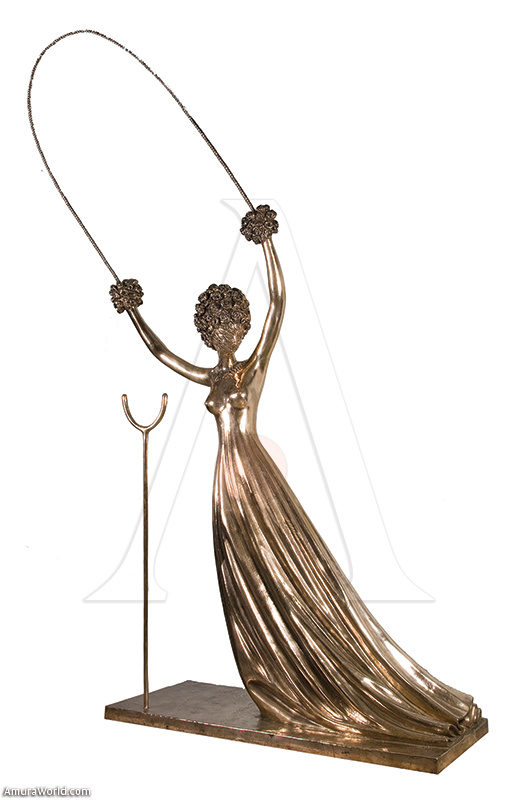If we acknowledge that the ultimate goal of art is to show the internal tissues of the soul, we will then acknowledge too the importance of sharing sensibility, beauty, history and knowledge.
The different degrees of culture allow society more or less mobility to solve its problems in it are located the transformational alternatives that allow a better well-being, i.e., a better living.
Thanks to collectors the fragments of history can be recovered, collectors fulfill a great role which is to preserve humankind’s creation, display it and bequeath it to future generations, in addition to closing the purchase-sale circle in the art market.
How much time and space a collector devotes to gather objects of his choice? We know from ancient Greece that there were collectors motivated by their interest in making public their treasures considered so valuable by them, thus their exhibit venues became the first known museums. This makes us realize that the collecting of art comes from ancient times and is an integral part of human culture since it exists as such.
We all somehow collect something from ideas to objects that we consider valuable to each of us and even for humanity as a cultural collective.
For these and other reasons, man has learned to gather objects to accompany him or to explain him things, we all have some way to do this, we collect since we’re small, let’s dive for a moment in our memories and surely images of toys, comics, books and crockery we used at home will appear. Thus, in the world we can find an enormous range of collections and collectors, as far as the imagination can go, throughout history. However, the art collections and especially the public ones are of invaluable importance, and belong to the same strata as a library, a cathedral in the cathedra academic sense-education, a forest or an ocean, for the spirit nourishes from them.
Art collections are permanently linked to public opinion, both lay and expert, but what should never be forgotten is the beauty that gives them social meaning and that allows to share the collection and to exhibit it for everyone to see, taking the risks for public exposure.
What would have been the end for many works of art without the existence of collectors? The collections have been throughout the years, the refuge of art for humanity, and the true social responsibility that comes with collections of this kind, is nothing but a real commitment to the community to which they belong.
The legacy
Mexico is now the home of a new cultural center, the Museo Soumaya, an institution with more than 16 years of existence in Plaza Loreto, has increased its collection in such a way that required a new space to display it properly. With a project that begun in 2008, Carlos Slim Foundation chose to erect a new museum, which besides being a great architectural landmark and an icon for the country, would become the most important safeguard, just as the most valuable in a human is what lives within him, of what has been called the collection of collections, with works and objects of cultural historical periods ranging from Mesoamerican art, to the great European masters of the Spanish school as El Greco, the Españoleto, Zurbaran, Murillo, flamenco artists such as Rubens, Hals, van Dyck, Italian representatives as a Leonardo da Vinci workshop, Tintoretto, Titian; German art with Cranach, Martinus; the colonial art, Mexican portrait painters of the nineteenth century like Clave, Gutierrez, Bustos, the Mexican and European landscape as Egerton, Chapman, Landesio, Löhr, Velasco; the Impressionism with Manet, Monet, Degas, Pissarro, Renoir, the early avant-garde with van Gogh, Modigliani, Cezanne, Toulouse-Lautrec, the twentieth-century Mexican art, with Rivera, Siqueiros, Orozco, Soriano, Toledo, the Rodin Era, with the largest collection of Rodin outside France, objects of the most varied and different periods, including the collection of coins of Licio Lagos, ivories, feather art and conch, and the collection of Ernesto Richheimer, the Lord of the Spoons.
Mexico City concentrates important art collections, with 152 museums, is one of the 6 cities with more museums in the world, only surpassed by Moscow, St. Petersburg, London, Paris and is almost on par with New York; museums presenting collections that range from pre-Columbian to the present works of contemporary artists, nevertheless, very few contain European paintings and sculptures of the last five centuries displayed to the public and that have the importance or aesthetic values that provoke emotions and incite to move around the world, eager to enjoy them wherever they are. This is one reason that distinguishes the Museo Soumaya from others.
The Soumaya Museum in Plaza Carso located in the New Polanco area, is a building with a steel frame covered with thousands of interlocking hexagons that remind us a coat of mail or a beehive.
Its shape evokes countless interpretations that consider it, among other things, a cube elongated by twisting. This is a beautiful whimsical geometry, an oval that expands as a network to the ground and into the open space, from a center of gravity, thus achieving fantastic stretchings from the center that turns smoothly creating huge curved sections that bind to ground and at the same time, seem to float through the air, without caring about how many tons of steel wrapped by these hexagons confine the structure, rising to just over 50 meters, through a spiral ramp that leads to a vault also shaped by a powerful nerve, allowing the passage of natural light while allowing the complete lack of columns, wall to wall, leaving an open clearing of 1800 m2 in the 6th floor and intermediate columns for each of the five remaining floors.
It is built in an area that not long ago was more of an industrial than residential type, transforming the area with the arrival of this new cultural space.
Today this building exhibits a selection of about 6 000 pieces of 16 different collections that constitute the body of the Museo Soumaya.
This is also a museum that has three walls, that is, which is open and not closed because it has programs that make their collections accessible. Carlos Slim Foundation since 2000 has made exhibitions that have traveled worldwide, with great emphasis on the countries of Latin America like Argentina, Peru and Panama, to name a few, although there have been exhibits at the Smithsonian in the U.S., Spain, Japan and other countries from Asia. In Mexico it has featured exhibitions in almost every state in the Republic. The Museo Soumaya carry out 45 itinerant exhibitions annually.
Seen from this perspective, the Soumaya Museum is more than a private collection, is a cultural institution with a mission to improve the current conditions of our own environment, with an emphasis on creating a different reality for Latin America by sharing this collection with the entire population.
Mexico City is a city of great contrasts, challenges, culture, a singular vehicular traffic, a population that is counted by tens of millions, picturesque neighborhoods, skyscrapers, historic avenues, and economic, political and social activities of an uncountable diversity; a defiant city in different ways, of public demonstrations of all kinds. It is in the colloquial sense, a city that never sleeps, or in perpetual motion.
With a museum like the Soumaya, the Slim-Domit marriage’s vocation is reaffirmed while building bridges of communication forming a network that allows to compose a new social fabric in which all the community framework finds itself and coexist. The interest and the public’s thirst to be in contact with these works of art, unite us and show us that art is like a time machine that easily transports and refers us to other times, other worlds and other ways of living. It makes us reflect on our origins, our roots and the course we’ll give to the new civilizations.
Today it is impossible not to link, the cave painting to contemporary art, for example, even if it is an incredible exercise, so close to one another, first because all art lives in the present, and second, because thanks to the new technologies and the contemporary way of presentation of today’s museums, it appears that the objects have not gone centuries.
It would seem that the mission of the Soumaya Museum is to give mankind the time and dedication that each work has throughout its history, to preserve it and share it for all those who wish to do so may enjoy it. Give yourself the time to know it and to live it; it gives us the opportunity to open communication channels that allow us to go directly to the oeuvre itself, without the constricting frames. A work of art is then a perfect psychoanalyst that lets individuals explore their own transcendence, plus the direct contact with art encourages us to become more sensitive and therefore more aware of the needs of others, more tolerant and respectful of the diversity that characterizes our civilization.
Hence the importance of a legacy of the size of the Soumaya Museum.
A legacy leaves us the commitment to be the future of society, a future with a great past, for which we are and will always be in debt. In the words by Umberto Eco, it is not about “being the contemporary of its own success, but throwing that bottle into the sea waiting for someone, undefined and indefinable, able of ever finding the beauty that the man from the past found in words or images”.
That is perhaps the greatest legacy that this museum could leave us: cast that bottle into the sea and hope that those of us who have found it, seize it and pass it on.
“We have to find the way to make that all fundamental and desirable things, be universally accessible.”
Carlos Slim Helu
A journey by the Soumaya
The innovative and inspiring architecture of Soumaya Museum invite us to encounter a universe of colors, textures and volumes; unimaginable in any other part of our geography, just by going through the threshold, we are greeted by a large hall that fills our eyes of art, in any direction we look; we will find a monumental advance of the further things we will find through the museum: within the plexus, a feeling that can either be compared with the child entrance to a candy store or to the music lover in the concert hall, just as in the director raises his baton.
A sculpture, highlighting volumes and the attention gets immediately focused on the impressive bronze monument The Thinker, an enlarged version as the one found in the Rodin Museum in Paris. Closely, the details of each body part lead us to his inner motivations and thoughts, from far; its impossible anatomy harmonizes the whole with its parts, and creates an aesthetic consistency that leaves to settle in the beauty of deformity. The fact of being so close of such special piece, keep it there, close at hand, gaze at it without hurry and from every conceivable angle, it is worth by itself the visit to the museum. At just some steps, we find The Pieta, a bronze marble sculpture by Michelangelo Buonarroti a work with a margin of error of 0.01% over the original. Intimacy and loneliness, the work is by itself an abstraction of pain and awareness of death, at the same time it shows the supreme sacrifice and the most sublime love.
On the other hand, the calling feature of the Soumaya Museum is inviting us to witness a dialogue between the art work from different sources, schools and techniques; downstairs we can appreciate the last mural by Diego Rivera, a mosaic piece with the theme of Juchitlán River where we can distinguish a front and back, which gives a special life to the work.Upstairs, we have the opportunity to see a mural by Rufino Tamayo, Still life, using our flag colors; green, white, and the red in the watermelon with seeds with the aim that Mexicans work jointly for the same purpose, and in the middle the bottles of wine and plums, fruits that are not native to America and which represent the cultural mosaic of which we as Mexicans are part of in a national large table.
1st Gallery.
Between the worlds: gold and silver Mexican coins in gold and silver, bills and ivories.
We ascend from the spiral ramp to the next floor to find the largest collection of medals, colonial and republican coins, antique American bills from the Second Mexican Empire, and the collection of ivories. The coin collection before our eyes, gives us a very detailed historical overview of the different stages of the famous Mexican mint, and is completed with pictures, quizzes and currencies of the late nineteenth and early twentieth centuries.
In the same Room we have a captivating ivory collection. In the seventeenth century the ivory had gone out of fashion in Europe. However in America, with the arrival of carved images of saints, Christos and Virgins from China and Philippines this material was revalued. The carved ivory from the Asian colonies of Spain and Portugal has been called iberoriental style and is divided into two: the Hispanic-Filipino and Indo-Portuguese, both made in China, or in Manila the first one and the second one in India and Africa, a global world connected by textile. Ernesto Richheimer’s collection deserves a special mention; The Lord of the Spoons, through which we get closer to different designs, practices and rituals that have accompanied these indispensible tools in the development of the humanity cultural heritage. One more piece is the custody from New Granada Viceroyalty, now Colombia, is encrusted with pearls, diamonds, amethystes and emeralds of great delicacy, which catches the attention. We also find the so-called American incunabula. First edition books whose word is a bridge between indigenous and conquerors.
2nd Gallery
Man and his objects
Nineteenth-century Mexican portrait and applied arts.
We continue ascending the spiral ramp and we entered the delicate room of nineteenth century Mexican portrait, during the eighteenth and nineteenth centuries, the practice of this genre took three main directions in our country: the Academy of Fine Arts of San Carlos, with the arrival of the Catalan painter Pelegrín Clavé, its director at that time, followed by others as Felipe Santiago Gutiérrez. The second course was the major provincial academies with painters such as José María Estrada and José Agustín Arrieta, among others; and finally, the popular portraits of artists who learned in an autodidactic, authentic and intuitive way, as the pictures by Hermenegildo Bustos and other authors. They are together with casta paintings that show the cultural mosaic of our country and popular waxes types of the nineteenth century of extraordinary bill.
We also find pieces of applied arts such as furniture, tables, cabinets, woodwork, ivory, pearl shell, wood, tortoishell, boxes and musical instruments.
With these objects we can get an idea of the lifestyle at different times, the collection includes dresses from 1800 to 1910, and highlights the difficulty posed to the ladies of society, embedded within the tight waists, belts and corsets of the time, inconceivable showcase furniture and accessories that give greater variety to the interpretation of the ages, which also shone for privacy and the objects view.
3rd Gallery.
European and New Spain
Old Masters.
We walked up and we go to the room dedicated to European and New Spain Old Masters, where the screen of The four parts of the world by the artist Juan Correa greeted us. Images of the Virgin Mary: the Virgin of Guadalupe and the Virgin of Sorrow. Beyond two great paintings of Jacopo Robusti, better known as Tintoretto, one of the biggest influences of Domenikos Theotokopoulos, The Greco, of which we can admire The Holy Family with Mary Magdalene and the fruit plate, The Tears of St. Peter and Christ on the cross in a landscape with horsemen, among other works; in the last one we can see how Greco accompanies the crucifixion of Jesus with the color of the clouds, that as they approach to his back, they are getting darker; showing the spirituality of the author.
The fervor and mysticism that elongated his figures to a higher plane remained constant in the works of Greco, along with femininity emanating from the hands of their characters. In contrast, the works of Brueghel for example, touch the same subject, they are not focus on the crucified, but they illustrate a variety of topics. José Ribera´s works are highlighted, the Spanish man that features its characters by their simple and even humble dress up that appears in his paintings, as San Pedro in penance, unlike the rich trappings used by Greco. The opportunity of getting closer to the painting gives us the pleasure to distinguish between the brushstrokes and touches that every painter gave to their works.
In the case of Immaculate Conception by Bartolomé Esteban Murillo, the angelic faces that reinforce the intentions of the doctrine of the Counterreformation of appealing sweetly to popular devotion, are highlighted, emphasizing their white clothing to symbolize the purity of the Virgin Mary without the stain of original sin, and her blue robe, which symbolizes royalty and the presence of the Holy Spirit. Later we find more works by the Spanish, Flemish and Italian School, some works deserve special mention such as the ones of Peter Paul Rubens, Van Dyck and Hals, among others.
In analogy, the New Spanish Old Masters reinterpreted the European model with the American sensibility. Cabrera, and its screen with Meleager and Atalanta; José Juárez and its Saint Augustine, looking earnestly at Francisco de Zurbarán.
Guatemalan stews, conch and feather art complete a journey through four centuries of artistic creations, among this artistic creations a mirror of obsidian from Mexican tradition, painted in the sixteenth century with a prayer in the Garden of Gethsemane, amazed visitors.
4th Gallery
Nature and brushes from
Impresionism to Vanguards.
Mexican and European landscape of the nineteenth century.
Impressionism and early avant-garde.
The upward spiral leaves us in the next room, which presents a varied collection with thematic landscapes, on one hand we have marine paintings, but we have also works about Mexican views by Conrad Wise Chapman, August Löhr, Landesio Eugenio, Luis Coto and Maldonado and the works of Jose Maria Velasco, as Ahuehuetes of Chapultepec.
If we continue the journey towards the sea, we can distinguish in the Mexican landscape painters influenced by the Impressionists, and even more we may be included in the section devoted to these European masters, who with their provocative and free strokes, decompose the objects in spots and lines of color. We marvel at works like A Parisian (or woman with brown hat) by Edouard Manet: Beauty by the mixture of a vain detail as a hat which contrasts with the expression of a melancholic and maybe afflicted face; Claude Monet and its elusive and natural landscapes, without liar reflections; the pastels, oil paintings and ceramics by Camille Pissarro; the fluid and flexible brushstrokes, full of vigor but with transparency effects of the works of Edgar Degas.
All of this just as a preamble to continue with the early avant-garde, never better represented that with the works of Vicent Van Gogh. We can fill our eyes with Landscape in Drenthe, After the Storm (or Shepherd with a flock of sheep), and Shack peasant coming home. The tremulants brushstrokes and the use of color that are characteristic of his following work do not appear in these paintings yet, it is about his Dutch period which is characterized by the darkness that flooded the mood of the artist around 1884. Maybe as a reflection of a profound loneliness, and his deep commitment to his art and his feelings.
5th Gallery
From ancient to modern Mexico.
Mesoamerican cultures of the West.
Twentieth century Mexican art.
It is interesting to see another kind of perspective from another collection in a different dialogue that crosses abruptly the transformation, but that also refers to the contact with Mexico, a contact with an identity in one of the most interesting collections; and newly added to the Soumaya wealth as a bailment with the INAH. It is a truly extraordinary collection, it is part of burials that have shot up to 500 meters below a large burial chamber, all linked to Western cultures, Nayarit, Colima, Jalisco and part of the current state of Guanajuato. Here contortionists and warriors dialogue with maternities. They range from the Pre-classic, Classic and Post-classic, but stressed the classic period around 200 AD with really attractive relations.
In this room we also find the art of the printing schedules Galas of Mexico, an art that helps us to understand how the relationship with the eternal feminine is interwoven, volcanoes and a centenary artist as Jesus Helguera.
Time of the Mexican Painting School. José Clemente Orozco, David Alfaro Siqueiros, Diego Rivera representing women sometimes wary, raped, sometimes rebuilt, works that finally give way to a stunning mural featuring the Soumaya on loan from the Suarez and Suarez collection, where we find an attractive position from the title: The land as the water and the industry belong to us, which is being restored directly into the rooms, and in mirror game dialogues with People at the University. The University of the People. For a new humanist culture of universal depth. In contrast to other great artist from the twentieth century, we also have women artists and from the breaking, Juan Soriano opens in new materials, schemes that push Mexico into modernity from a perspective and foresight always inclusive.
6th Gallery
Julian and Linda Slim Gallery.
The Age of Rodin.
The pinnacle of the upward spiral that connects the different rooms of the museum is this the large space of over 1800 m2 free of pillars, crowned by a steel rib that protects one of the most important collections of Soumaya: Auguste Rodin’s Age. Challenge to engineering rather than architecture, a plant that is suspended 45 meters above street level.
The work that greets visitors, in which Rodin enters the Paris Motor Show, is the Bronze Age. The criticism sentenced it, and Rodin even had to go to trial on charges of killing the model, Auguste Neyt, a Belgian soldier who had to testify that he was alive. From that experience on, Rodin speaks of movement, human scale, but above all of truth and emotion when sculpting.
The Paris Motor Show, artists who were direct teachers of Rodin, as the case of Albert-Ernest Carrier-Belleuse or indirect as in the case of Jean Baptiste Carpeaux, who was commissioned by the French State to realize the facade of the Paris Opera. This are forms with anatomic and harmonic proportions, as part of Romanticism. However, Rodin would say that this is not enough in the art, and will propose a piece rejected: Mask of the man with the broken nose. What artistic quality has a man who physically has a broken nose? And Rodin said that everything: in the wild ugly part the sublime part must be found, but also in the sublime part we should have found the sublime ugliness.
Rodin learns from Bazanti the possibility of touring the piece. It is interesting how the Florentine manages volume prospects, relations with space, how different light and shadow accents start merging, where we can find that relation of the space’s rotation that allows him to carry out his work.
Maybe the project most notable is The Gate of the Hell, the gate of access to the Museum of Decorative Arts in Paris, which was never materialized, so the teacher starts conceiving independently the pieces. The most important works by Rodin come from Adam and Eve, they forge the entrance door with its counterpart: The Gate of the Paradise. They also come from three literary sources that wanted to represent through three bodies that are three shadows, accents to the David of Michelangelo. The Hell, which is represented by The Divine Comedy of Dante Alighieri. On the other hand, in the intermediate space which is the purgatory appears the figure of Ovid, Latin poet and his Metamorphoses; and the part that was hoped for, is composed by Cursed Verses and Flowers of Evil by Charles Baudelaire. On a side we see an eroticized Eva that plays with her hair, while showing remorse and shame for having broken the original covenant, she is pregnant and she is the mother of mankind.
The life of France is represented by the project The Burghers of Calais. Opens Orphan Alsatian, which represents the result of the Franco-Prussian War, and speaks only of the homeland, motherland, mother. A girl who has lost her mother in France, and which sees the devastation, homelessness, as immediate predecessor of the First World War.
So, French people decided to look in the annals of history for a process in the past where they had been able to get ahead. These characters fought in the War of 100 Years. The project will enable Rodin to explore the volume from new perspectives. How can a party mean everything? In the Great clenched hand a high muscle tension is observed, anxiety, a desolate feeling and at the same time, to express everything that involves the project of war. From there, Rodin will explore The Cathedral with two right hands that barely touch one to the other, the sense of emptiness of Gothic cathedrals. In addition, musical accents get together in The Pianist’s Hand, leading us to a central theme, which speaks of one of the most interesting drives of Rodin: love through The kiss. It is important to see it downwards and actually find the details shown in the sculpture. It is one of the most important icons of world culture. However, it is worth peek because Rodin had said no to find the beautiful but sinister. We know the lovers names, Dante took them for his Comedy, Francesca da Rimini, married Gianciotto Malatesta, who has a brother, Paolo, the man who kisses the girl; they were brothers in law, and spent the afternoon reading The Adventures of Lancelot, pop-up book with a separate sheet.
At the moment where the Queen Guinevere betrays King Arthur and kisses Lancelot, Paolo and Francesca are merged in a kiss. Gianciotto discovers them, throws them into a bottomless pit and they get captured on the second circle of hell for the sin of lust. One attractive issue is that there is no kiss. If the visitor appears, they are about to brush her lips. However, there is a second version of the work, also performed in the same year, and a bad cast makes the hand touching the thigh and there the lips get melted. From the nine versions of The Kiss made by Rodin, the nine are part of the Carlos Slim Foundation, two here and the others in the Soumaya Plaza Loreto.
In contrast, and close to the Pre-Raphaelites, is Secret Love attributed to Antonio Rosetti, who has covered the face of the son of Venus, the Greek Aphrodite. The god of love, has lead-tipped arrows and some others of gold, if the lead tips stick in the heart of a person, this person would hate forever the first person this could see, but if the golden arrows stick in the person’s heart, the person would fall hopelessly in love with the first person this could see.
One day Eros accidentally stuck one of his golden arrows and fell in love with the beautiful and human Psyche; Rodin will resignify the myth in his marble; Psyche contemplating love. She sheltered by the cloak of night, discovers the identity of her husband. In the third position of the ballet she attracts visitors in order to break the pact and finally consent the marriage between Psyche and Eros.
Love to the folly by Jean Baptiste Carpeaux, is one of the first models for the facade of the Paris Opera. The love that stirs the hearts of men, moves and upsets them, as has shaken the love of his mother with the myth of Adonis or with the Fleeting Love, love that escapes, with Charles Baudelaire’s perversions of the deepest verses here in Cursed Women or Doomed Women. To speak of this violence of love, we also have in bronze and marble The Kiss of the Ghost and the Maiden, Triumphant Youth, the Death or the Awakening of Adonis. Also, with these passions of finding the perfect match at any cost. The role of the ideal partner in this atrocity of love with or without sense.
There is also a big right hand, God’s hand, which represents at the same time a Rodin´s reinterpretation of Genesis: Adam and Eve without ribs involved, arising from a kiss...
It is Camille Claudel and Auguste Rodin, a passionate and mutual relationship influence. From the great sculptor, Soumaya presents two versions of The Valas, The Wave, with echoes of Calaude Debussy’s music, and The Confidents. It is also attractive to see the representation of portraits from the Rodin´s earliest ones to the later ones by Lady Sackville, or their relation to modern sculpture. Balzac willing ironically with Dominican monk habit, which is nothing but a robe, at the time of creation in the privacy of the night to create realistic ways of the Literature of Balzac. In dialogue, the play that inspired it: Ugolino Carpeaux Devouring His Children.
The thinker redefined by many artists, the avant-garde also embraced it. Surrealism embraced it in his Anthropomorphic Cabinet. Here, unlike that modern thinker, he spoke of those questions that West has been done since it is such: Who am I?, Where did I come from?, Where am I going? It looks inward to Freudian psychoanalysis and in drawers as shameful secrets, analogies between the collections of the Carlos Slim Foundation. Tensions suspending a perennial apple falling and a body of the Surrealistic Newton hit. This same passion he has for the volume Salvador Dali, is also the same passion he has for women, and hence to understand all of them, from the Giraffe Women, Venus space, even the Dali Dancer, or the own Alice in Wonderland; who has transmuted her face into a trunk and her hair in pink and living with clocks that melt or a show of fantastic animals.
We cannot list in an article of this size, the amount of works we can enjoy in this wonderful home of muses. Suffice is to say that the works mentioned are only a sample of a vast art universe that should be appreciated with the proper time and dedication, so our suggestion is not to stay just with what we have presented here, but to be pleased to visit this new museum and live firsthand the pleasure of absorbing with your senses, every and each work. Believe me, there is no way to feel yourself disappointed.
Text: Gisselle Morán ± Photo: Colección Museo Soumaya.Fundación Carlos Slim, AMURA-León Felipe Chargoy

